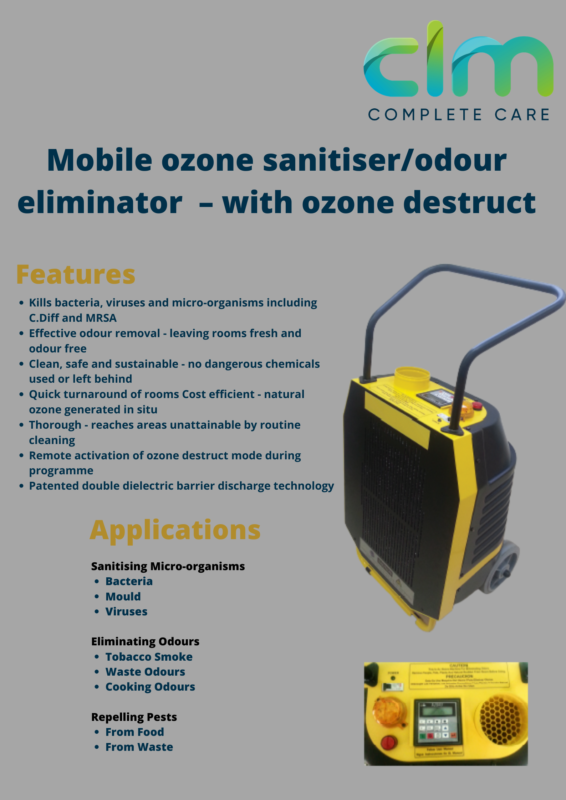As the coronavirus continues to evolve and become more virulent, there are many unanswered questions as there has been no proper clinical or scientific studies that have been conducted on it yet with regards to its properties etc as the 2019-nCoV coronavirus only made its maiden debut in December 2019.
.jpg)
There are questions about how long a virus such as the coronavirus, can survive outside a host ie on surfaces.
The influenza virus can survive anything between 5 hours up to 7 days on an outside surface depending on the environment temperature and humidity whereas noroviruses that typically attack the gastrointestinal tract, can survive up to four weeks on surfaces even in hot and dry conditions and can withstand most disinfectants.
Typically most respiratory viruses such as the coronavirus favour a cooler temperature.
There has been no studies done so far on the new coronavirus or even on the SARS virus, its ‘close cousin’ with regards to how long it can survive outside on surfaces.
It is wrong to assume that the coronavirus can only remain active for a few hours on surface as suggested by one health organization via its online site, that is claiming it’s the leading source of information on the coronavirus when there is no scientific proof of that
Viruses typically are not really living organisms per se. They are complex bio-molecules that need a living cell to be active.
In order to be safe, as we still do not really know how long these coronavirus can survive on surfaces, its best to disinfect areas that have lots of contact with people whether or not they are showing signs of having been infected or not.
One good way to do that is by deploying ozone gas.
Ozone gas has been proven to kill the SARS coronavirus and since the structure of the new 2019-nCoV coronavirus is almost identical to that of the SARS coronavirus, it is relatively safe to say that it will also work on the new coronavirus though it must be noted that there is no studies to date except one that is current ongoing n China at the Institute of Virology In Hubei with regards to this. Progress of that study has shown that it works and the study should be concluded by the end of this week and officially published in the journal Virology.
There are more than 17 scientific studies that show Ozone gas is able to destroy the SARS coronavirus.
Ozone is a naturally occurring gas created from oxygen atoms. The oxygen molecule is made up of 2 oxygen atoms. These oxygen molecules are broken into atoms by the corona discharge during lightning storms or by UV light from the Sun. Single oxygen atoms cannot exist alone without regrouping back into di-atomic oxygen molecules. During this recombination stage some atoms will regroup into loosely bonded tri-atomic oxygen. This new molecule is called Ozone or O3.
Ozone generators are able to make ozone from normal air and are normally used as room disinfectants.
The antipathogenic effects of ozone have been substantiated for several decades. Its killing action upon bacteria, viruses, fungi, and in many species of protozoa, serve as the basis for its increasing use in disinfecting municipal water supplies in cities worldwide.
Typically, viruses are small, independent particles, built of crystals and macromolecules. Unlike bacteria, they multiply only within the host cell. Ozone destroys viruses by diffusing through the protein coat into the nucleic acid core, resulting in damage of the viral RNA. At higher concentrations, ozone destroys the capsid or exterior protein shell by oxidation.
Numerous families of viruses including poliovirus I and 2, human rotavruses, Norwalk virus, Parvoviruses, and Hepatitis A, B and non-A non-B are among many others that are susceptible to the virucidal actions of ozone.
Most research efforts on ozone’s virucidal effects have centered upon ozone’s propensity to break apart lipid molecules at sites of multiple bond configuration. Indeed, once the lipid envelope of the virus is fragmented, its DNA or RNA core cannot survive.
Non-enveloped viruses (Adenoviridae, Picornaviridae, namely poliovirus, Coxsachie, Echovirus, Rhinovirus, Hepatitis A and E, and Reoviridae (Rotavirus), have also begun to be studied. Viruses that do not have an envelope are called “naked viruses.” They are constituted of a nucleic acid core (made of DNA or RNA) and a nucleic acid coat, or capsid, made of protein. Ozone, however, aside from its well-recognized action upon unsaturated lipids, can also interact with certain proteins and their constituents, namely amino acids. Indeed, when ozone comes in contact with capsid proteins, protein hydroxides and protein hydroxides and protein hydroperoxides are formed. Viruses have no protections against oxidative stress.
The enveloped viruses are usually more sensitive to physico-chemical challenges than are naked virions. Although ozone’s effects upon unsaturated lipids is one of its best documented biochemical action, ozone is known to interact with proteins, carbohydrates, and nucleic acids.
The new coronavirus is an enveloped virus.



